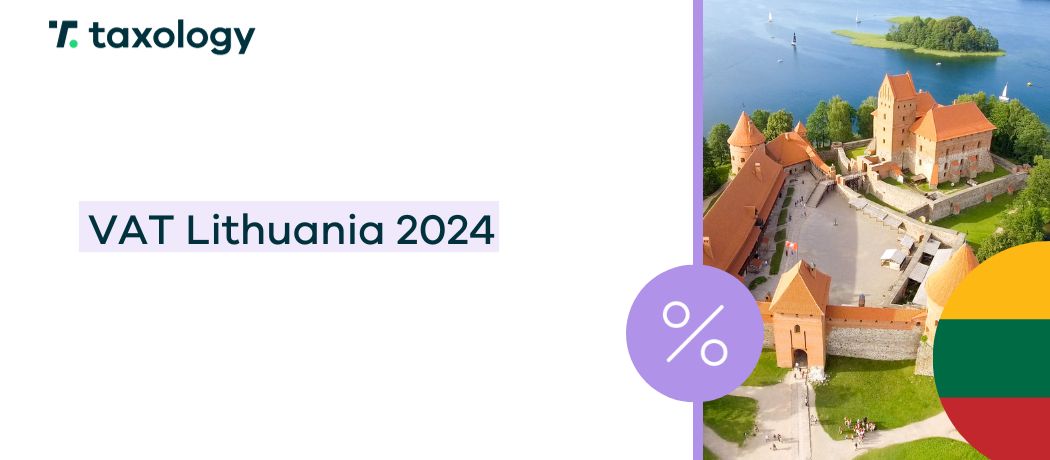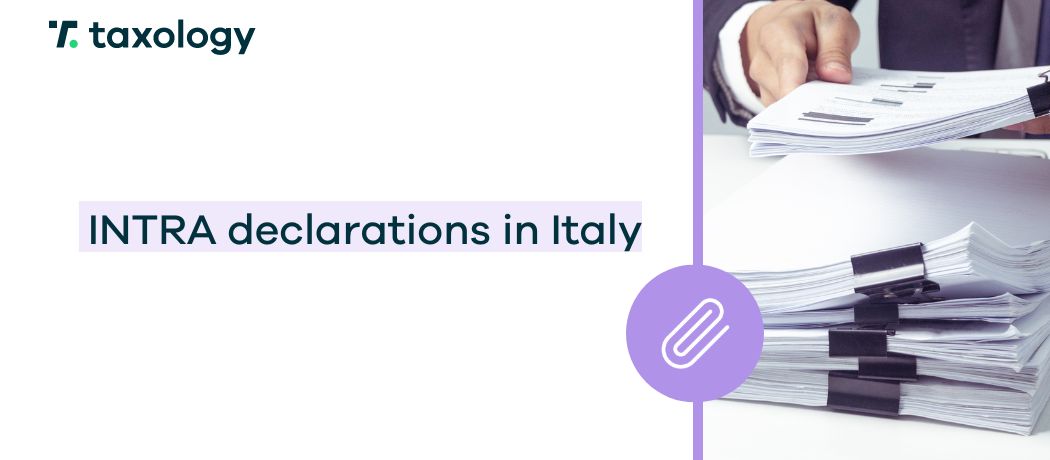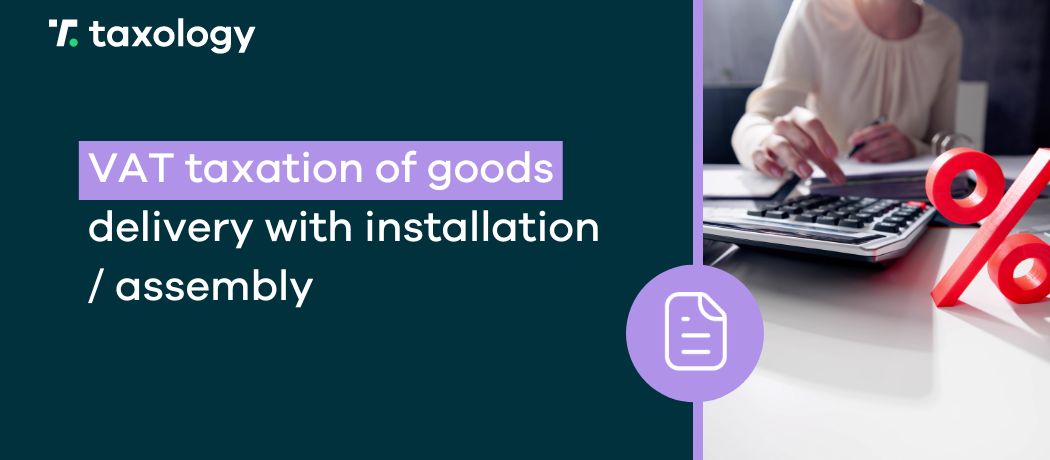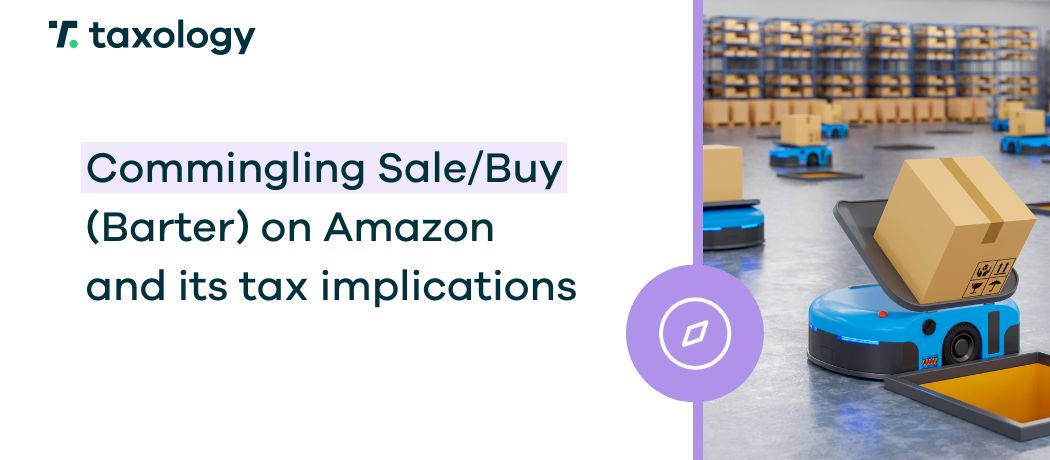Italy ranks as the fourth largest e-commerce market in Europe in terms of value. It is no surprise, then, that it attracts entrepreneurs looking to expand in this direction. However, […]
Read in: 4 minVAT Lithuania 2024
- Last update: 23.02.2024
- Published: 14.07.2023
- Read in: 6 min
Taxes are an integral part of the economic systems in every country worldwide, including European Union Member States such as Lithuania. One of the most widely recognised and possibly the most prevalent tax is Value Added Tax (VAT), also referred to as a consumption tax in Poland.
VAT can also be defined as a consumption tax, which is levied on final consumers for products and services of a consumable nature. Entrepreneurs are also impacted as they are obliged to settle VAT on the sales of goods and services. This holds true for Lithuania, an EU Member State. In the subsequent article, our focus will be on the various aspects of VAT in Lithuania.
From the following article you will find out:
- What is the standard VAT rate in Lithuania?
- What are the reduced VAT rates in Lithuania?
- Who is required to register for VAT in Lithuania?
- How to register for VAT in Lithuania?
- The different types of VAT returns and their submission deadlines in Lithuania?
- What do the regulations governing invoicing in Lithuania state?
VAT rates in Lithuania
In Lithuania, the standard VAT rate stands at 21% and applies to all goods and services not qualifying for the reduced VAT rates. Lithuania offers three reduced VAT rates, which are 9%, 5%, and 0%.
The 9% reduced rate in Lithuania
As mentioned earlier, Lithuania employs three reduced VAT rates. The highest among these is set at 9%, and it applies to the following:
- certain passenger transport,
- thermal energy,
- hotel services,
- district heating,
- books and e-books,
- firewood,
- accommodation,
- admission to cultural and artistic events
- catering services and takeaways (until 31 December 2023).
The 5% reduced rate in Lithuania
The second among Lithuania’s reduced VAT rates stands at 5% and applies to:
- pharmaceutical products,
- medical equipment for the disabled,
- medicinal food products,
- assistive devices for those with disabilities,
- newspapers, and magazines,
The 0% reduced rate in Lithuania
On the other hand, the zero rate, which is the lowest VAT rate in Lithuania, is applicable to intra-Community transport and international transport.
Who is required to register for VAT in Lithuania?
VAT registration in Lithuania is required under circumstances that are similar to those in other EU nations. These situations include:
- importing goods from non-EU countries (outside the European Union) into Lithuania,
- exporting goods from Lithuania to non-EU countries,
- selling goods within Lithuania (intra-Community supply of goods) or importing goods into Lithuania from other EU countries (intra-Community acquisition of goods),
- storing goods within the territory of a European Union member state.
Furthermore, entrepreneurs conducting intra-Community transactions, involving the sale of goods and services to customers within Lithuania, with a total sales value exceeding EUR 10,000, are also required to register for VAT in Lithuania. Once they exceed this threshold, they must settle VAT either locally in the EU country where the buyers are located or through the VAT OSS procedure.
Conversely, until the threshold is surpassed, they can apply the VAT rates of their own country when taxing online sales of their products and services.
It’s crucial to emphasise that registering for VAT in Lithuania should occur preemptively, ahead of any VAT liabilities or before you exceed the intra-community sales threshold.
If your business engages in VAT-taxable activities not only in Lithuania but also across various other EU countries or in the UK and you need guidance on tax matters, please schedule a free consultation, share your particular challenges, and our team of VAT Compliance specialists will offer the support you require.
The VAT registration process - Lithuania
Foreign entities seeking to become VAT taxpayers in Lithuania must complete their VAT registration exclusively through the online platform called Mano VMI.
It’s important to highlight that, before seeking a VAT number in Lithuania, the applicant needs to initially become part of the taxpayers’ register. This can be done by either submitting the form FR0227 (for foreign VAT taxpayers) or the REG812 (for foreign natural persons). This registration process can be completed through the Mano VMI online service mentioned earlier, or through traditional mail by sending physical copies of the mentioned application forms. Subsequently, the decision regarding taxpayer registration is typically made within 5 business days from the application’s receipt, and the decision on VAT registration is typically issued within 3 business days.
The types and deadlines for filing VAT returns Lithuania
VAT taxpayers in Lithuania are obliged to complete and submit their monthly VAT returns, with a deadline of the 25th day of the month following the end of the accounting period. To illustrate, the deadline for the January VAT return falls on 25 February, and for the August VAT return, it’s 25 September.
Additionally, businesses in Lithuania are also obligated to submit their annual VAT returns, with a deadline of 1 October of the subsequent year.
It’s worth noting that non-European Union entities will require fiscal representation to fulfil their VAT obligations in Lithuania.

Need help with VAT in the EU or UK?
Contact us and tell us exactly what you need, and our VAT Compliance specialists will take care of the rest! Taxology’s offer includes assistance with registrations, settlements and VAT and VAT OSS declarations.
Schedule a consultationInvoicing regulations in Lithuania
When creating a VAT invoice in Lithuania, the VAT amount must be indicated in Euros. In cases where the invoice is issued in a different currency, the VAT amount should be converted using the exchange rate established by the European Central Bank on the invoice’s issuance date.
Alternatively, if the European Central Bank hasn’t specified a conversion rate for the particular currency, the rate to be applied should be that of the National Central Bank of Lithuania (Lietuvos Bankas) in effect on the date of the invoice issuance.
Furthermore, invoices for transactions should be prepared either in Lithuanian or in two languages, with one of them being Lithuanian. Failure to do so may result in the tax authority requesting a translation.
Intrastat Lithuania
In Lithuania, being an EU member state, there is a requirement for Intrastat statistical reporting, encompassing both the export and import of goods.
The threshold for reporting on goods exports stands at €300,000, while for goods imports, it is set at €500,000. Additionally, the deadline for submitting these reports falls on the 10th of the month following the accounting period.
If you’d like to delve deeper into this topic, check out our article – Intrastat Thresholds 2024.
Lithuania VAT 2024 - summary
Being a European Union member state, Lithuania employs the VAT system, which is a fundamental component of its economic structure. As of 2024, the standard VAT rate in Lithuania is 21%. Additionally, Lithuania implements three reduced VAT rates of 9%, 5%, and 0%, which are applicable to specific goods and services.
In terms of VAT registration in Lithuania, foreign entrepreneurs are required to register under circumstances similar to those in other EU countries, such as Poland. This includes scenarios like importing goods from non-EU countries into Lithuania, selling in Lithuania, or importing goods from other EU nations into Lithuania. The registration process can be conveniently completed online through the Mano VMI service.
When issuing a VAT invoice in Lithuania, it’s essential that the VAT amount is indicated in euros. Furthermore, invoices for transactions must be provided either in Lithuanian or in two languages, with at least one being Lithuanian. Intrastat statistical reporting is another obligatory procedure in Lithuania.
It’s important to be aware that VAT rates and tax obligations can change, not only in Lithuania but in all EU countries. Therefore, to ensure compliance with the regulations, it is advisable to consult with VAT specialists in Europe or the UK.
If you require any assistance in terms of registration, settlements, returns or VAT OSS, please don’t hesitate to schedule a free consultation and our VAT Compliance specialists will provide you with the support you need.
Meanwhile, if you want to learn more, be sure to check out how VAT registration is handled in: France, Spain, Germany, UK or Italy.




